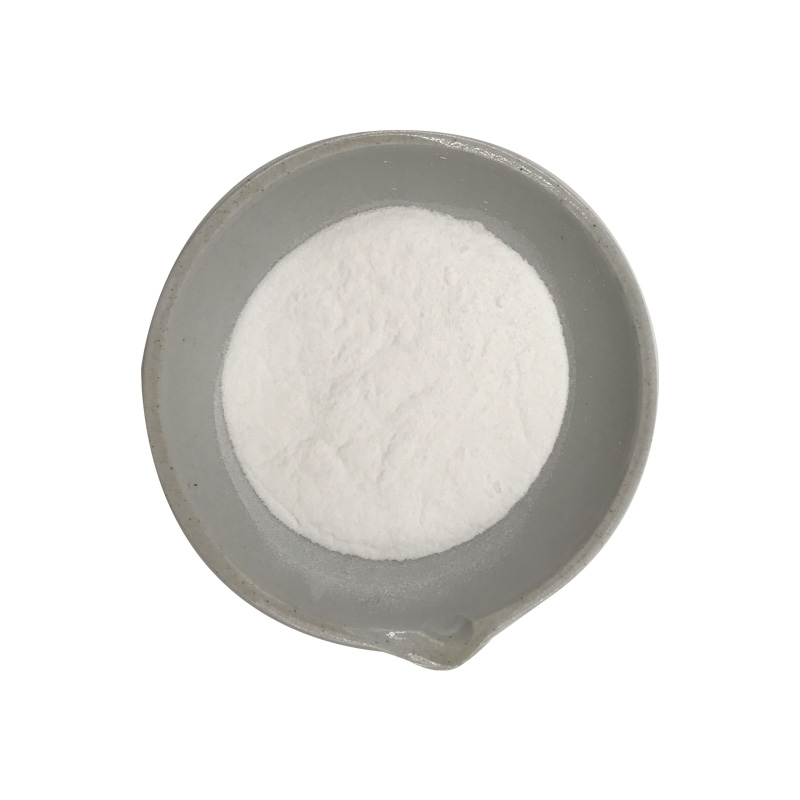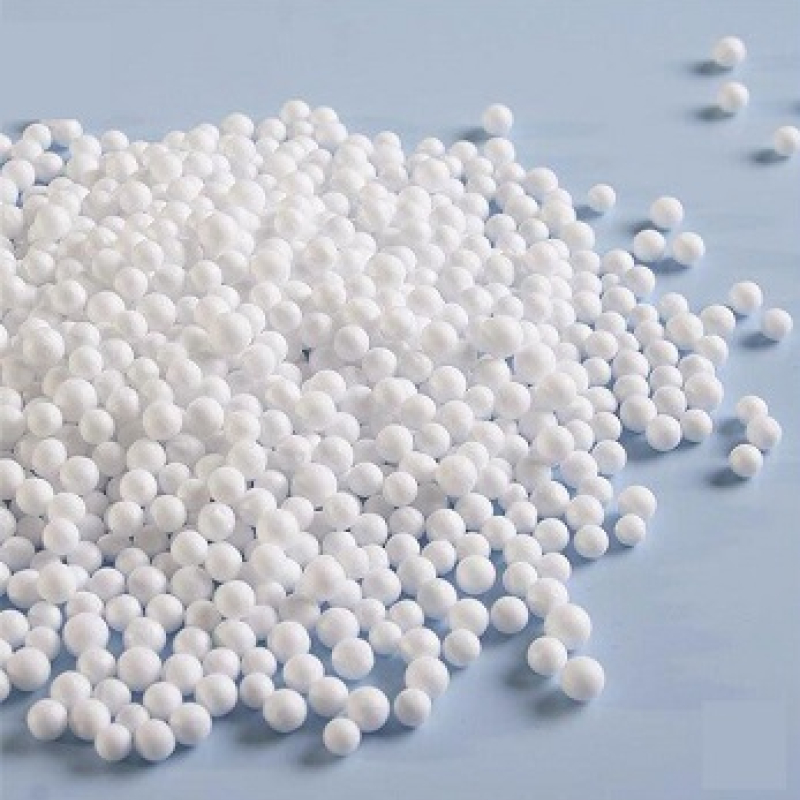5-Methyl-1H-benzotriazole CAS#136-85-6The pure product is usually white to off-white granules or powder, but the actual product may vary slightly due to factors such as purity.Melting point: 80-86℃.Solubility: Hardly soluble in water, soluble in organic solvents such as alcohol, benzene, toluene, chloroform, and also soluble in dilute alkali solution.
今コンタクトしてください
Monopotassium phosphite CAS#13977-65-6Potassium dihydrogen phosphite, a chemical with the molecular formula KH2PO3, can be used as a direct bactericide and complexing agent for calcium and magnesium ions in industrial circulating water.
今コンタクトしてください
Products Description of Antioxidant 168 CAS#31570-04-4Antioxidant 168 is a phosphite antioxidant with excellent performance. It has strong extraction resistance, is stable against hydrolysis, and can significantly improve the light stability of products. It can be used in combination with a variety of phenolic antioxidants. . For example, Cyanox2777 developed by the American company Cyanamid is a compound of antioxidant 168 and phenolic antioxidant 1790. The combined use of phosphite and phenolic antioxidants can give full play to the synergistic effect.
今コンタクトしてください
Products Description of 1-Hexanol CAS#111-27-3Colorless liquid. Boiling point 157℃, relative density 0.819, miscible with ethanol, propylene glycol, and oil. Has a light green scent of young branches and leaves, with a slight aroma of wine, fruit, and fat. Hexanol or its carboxylic acid esters are present in trace amounts in citrus fruits, berries, etc.
今コンタクトしてください
Products Description of Ferric ammonium oxalate trihydrate CAS#13268-42-3Calcium and magnesium precipitants, electroplating industryFerric ammonium oxalate trihydrate Chemical PropertiesMelting point 161°C (rough estimate)density 1,78 g/cm3solubility very soluble in H2O; insoluble in ethanolform Crystalline Powdercolor GreenWater Solubility Very soluble in water. Insoluble in alcoholSensitive Light Sensitive & HygroscopicMerck 14,517Exposure limitsACGIH: TWA 1 mg/m3NIOSH: TWA 1 mg/m3Stability:May decompose upon exposure to light.
今コンタクトしてください
Products Description of Color Developing Agent CD-3 CAS#24567-76-8White powder crystalColor Developing Agent CD-3 Chemical PropertiesWater Solubility Soluble in waterform powder to crystalcolor White to Light yellow to Light orangeInChIInChI=1S/2C12H21N3O2S.3H2O4S/c2*1-4-15(8-7-14-18(3,16)17)11-5-6-12(13)10(2)9-11;3*1-5(2,3)4/h2*5-6,9,14H,4,7-8,13H2,1-3H3;3*(H2,1,2,3,4)InChIKeyNPDFXFLCEDDWEG-UHFFFAOYSA-NSMILESC1(=CC=C(N)C(C)=C1)N(CC)CCNS(=O)(=O)C.C1(=CC=C(N)C(C)=C1)N(CC)CCNS(=O)(=O)C.S(=O)(=O)(O)O.S(=O)(=O)(O)O.S(=O)(=O)(O)OSafety InformationHazard Codes Xn;N,N,XnRisk
今コンタクトしてください
Products Description of Flumethrin CAS#69770-45-2The industrial product is a clear brown liquid with a slight special odor. The specific density d is 1.013, and the vapor pressure is 1.33×10-8Pa (20°C). It is insoluble in water, but soluble in organic solvents such as methanol, acetone, and xylene.
今コンタクトしてください
Products Description of Butyl acetate CAS#123-86-4Butyl acetate is a carboxylic acid ester synthetic fragrance, also known as butyl acetate. It is a colorless transparent liquid with a strong fruity aroma. It can be mixed with ethanol and ether at will, can be dissolved in most organic solvents, and is slightly soluble in water. The solubility in water is 0.05g. Its vapor has a weak anesthetic effect, and the allowable concentration in the air is 0.2g/l. This product has a strong fruity aroma.
今コンタクトしてください
Products Description of Antimony triacetate CAS#6923-52-0Antimony(III) acetate is an antimony compound with the chemical formula Sb(CH3CO2)3.
今コンタクトしてください
Products Description of Tris(hydroxymethyl)nitromethane CAS#126-11-4Chemical, crystallizes into white crystals in a mixture of ethyl acetate and benzene.
今コンタクトしてください
Products Description of Ethoxyquin CAS#91-53-2Ethoxyquin is abbreviated as EQ or EMQ, also known as ethoxyquin, and its trade names are Sandoquin, Sandoquin, Hupiling, and Ethoxyquin. A yellow to tan viscous liquid with a special odor. Insoluble in water, soluble in benzene, gasoline, ether, alcohol, carbon tetrachloride, acetone and alkyl dichloride Chemicalbook. It is easy to oxidize under natural light. When exposed to air and oxygen, the color becomes dark brown and the viscosity increases. It should be stored in an airtight container away from light.
今コンタクトしてください
Products Description of DMI CAS#80-73-91,3-dimethyl-2-imidazolinone, also known as dimethylethylene urea, referred to as 1,3-dimethyl-2-imidazolinone, is a polar solvent with a high boiling point, Chemicalbook, It has high flash point, low melting point, extremely low toxicity, extremely low pollution and strong solubility.
今コンタクトしてください
Idebenone CAS#58186-27-9 Edesbenzone is a quinone organic compound similar to coenzyme Q-10. It is a drug developed by Takeda Pharmaceutical to treat Alzheimer's disease and a number of other cognitive defects. However, these advances related to this indication have been modest.
今コンタクトしてください
Methyltriphenylphosphonium iodide Chemical PropertiesMelting point 183-185 °C(lit.)storage temp. Keep in dark place,Inert atmosphere,Room temperaturesolubility Chloroform (Slightly), Methanol (Slightly)form Powdercolor White to light yellowWater Solubility SOLUBLESensitive Light Sensitive & HygroscopicInChIInChI=1S/C19H18P.HI/c1-20(17-11-5-2-6-12-17,18-13-7-3-8-14-18)19-15-9-4-10-16-19;/h2-16H,1H3;1H/q+1;/p-1InChIKeyJNMIXMFEVJHFNY-UHFFFAOYSA-MSMILES[P+](C)(C1=CC=CC=C1)(C1=CC=CC=C1)C1=CC=CC=C1.[I-]CAS DataBase Reference2065-66-9(CAS DataBase Reference
今コンタクトしてください
Products Description of 2,4-di-tert-butylphenol CAS#96-76-42,4-Di-tert-butylphenol widely exists in plants and is also an important intermediate for fine chemical products. It is mainly used to prepare co-antioxidant 168, and is also used to prepare polyisobutylene, polyamide, polycarbonate, etc.; it is still It can be used to produce antioxidant Chemicalbook (300, 314), ultraviolet absorber, light stabilizer 120, dyes and textile auxiliaries, and 2402 resin.
今コンタクトしてください
Products Description of Pyrazine CAS#290-37-9Pyrazine is a chemical.CAS No. is 290-37-9.Pyrazine Chemical PropertiesMelting point 50-56 °C (lit.)Boiling point 115-116 °C (lit.)density 1.031 g/mL at 25 °C (lit.)refractive index 1.5235FEMA 4015 | PYRAZINEFp 132 °Fstorage temp. Store below +30°C.solubility SOLUBLEpka0.65(at 27℃)form Crystalscolor WhiteSpecific Gravity1.031Odorat 0.10 % in propylene glycol.
今コンタクトしてください
Products Description of Casein CAS#9000-71-9 Casein is the main protein in the milk of mammals, including cows, sheep and humans. The protein in milk is mainly casein, while human milk is mainly albumin. Casein is a large, hard, dense, and extremely difficult to digest and decompose curd.Casein is the highest content protein in milk. It is currently mainly used as a food raw material or microbial culture medium.
今コンタクトしてください
Products Description of Dextrin CAS#9004-53-9White amorphous powder, odorless, slightly sweet taste.Dextrin Chemical PropertiesMelting point 53.75-54 °Cdensity 0.8 g/cm3storage temp. Store at RT.solubility H2O: 0.1 g/mL hot, complete, yellow to very deep yellowform powdercolor yellowOdorodorlessWater Solubility Soluble in hot water (0.1 g/ml).Sensitive HygroscopicMerck 14,2953Dielectric constant2.2(Ambient)Stability:Stable. Combustible.
今コンタクトしてください
Products Description of Dipentaerythritol hexaacrylate CAS#29570-58-9White powderDipentaerythritol hexaacrylate Chemical PropertiesBoiling point 640.7±55.0 °C(Predicted)density 1.184±0.06 g/cm3(Predicted)Fp 266 °Cstorage temp. Sealed in dry,Room Temperatureform Liquidcolor Colorless to Light yellow to Light orange clear liquidEPA Substance Registry SystemDipentaerythritol hexaacrylate (29570-58-9)Factory and Equipment ShowFast delivery timeInventory 2-3 working days New production 7-10 working days
今コンタクトしてください
Products Description of 2,4-Difluoro-alpha-(1H-1,2,4-triazolyl)acetophenone CAS#86404-63-9Pharmaceutical Chemical Intermediates2,4-Difluoro-alpha-(1H-1,2,4-triazolyl)acetophenone Chemical PropertiesMelting point 103-107 °C(lit.)Boiling point 388.0±52.0 °C(Predicted)density 1.39±0.1 g/cm3(Predicted)storage temp. 2-8°Csolubility Chloroform (Slightly), Methanol (Slightly)form Solidpka2.05±0.10(Predicted)color White to pale brownCAS DataBase Reference86404-63-9(CAS DataBase Reference)Safety InformationSafety Statements 24/25WGK Germany 3HS Cod
今コンタクトしてください
Products Description of (Z)-N-9-octadecenylpropane-1,3-diamineCAS#7173-62-8Colorless liquid(Z)-N-9-octadecenylpropane-1,3-diamine Chemical PropertiesBoiling point 435.6±28.0 °C(Predicted)density 0.851±0.06 g/cm3(Predicted)vapor pressure 0.002Pa at 20℃pka10.67±0.19(Predicted)Water Solubility 36mg/L at 23℃LogP0EPA Substance Registry SystemN-Oleyl-1,3-propanediamine (7173-62-8)Factory and Equipment ShowFast delivery timeInventory 2-3 working days New production 7-10 working days
今コンタクトしてください
Products Description of Polyisobutylene CAS#9003-27-4Ammonium Chloride (CAS#12125-02-9) is a white crystalline salt that is highly soluble in water, with a solubility of 37.2 g/100 g at 20°C. It is a crucial component in agricultural fertilizers, providing essential nitrogen for plant growth. This compound is also used as a feed additive and in various industrial applications due to its versatility. In agriculture, Ammonium Chloride is valued for its ability to enhance soil fertility and promote robust plant development.
今コンタクトしてください
Products Description of Calcium Ammonium NitrateCAS#15245-12-2Calcium ammonium nitrate is a nitrogen fertilizer made by melting ammonium nitrate with a certain proportion of limestone and dolomite powder. The ingredients are a mixture of NH4NO3, CaCO3 and MgCO3. Calcium ammonium nitrate contains 21% to 26% nitrogen (N), and is grayish white or light yellow granules or powder. The aqueous solution is weakly alkaline.Calcium ammonium nitrate is the world's most soluble calcium-containing chemical fertilizer.
今コンタクトしてください
Products Description of Ammonium phosphate dibasic CAS#7783-28-0Diammonium phosphate, also known as diammonium hydrogen phosphate (DAP), is a compound fertilizer containing two nutrients, nitrogen and phosphorus. Diammonium hydrogen phosphate is a high-concentration quick-acting fertilizer that is easily soluble in water and has less solids after dissolution. It is suitable for various crops and soils, especially for crops that prefer nitrogen and require phosphorus. It can be used as base fertilizer or topdressing, and deep application is recommended.
今コンタクトしてください

































